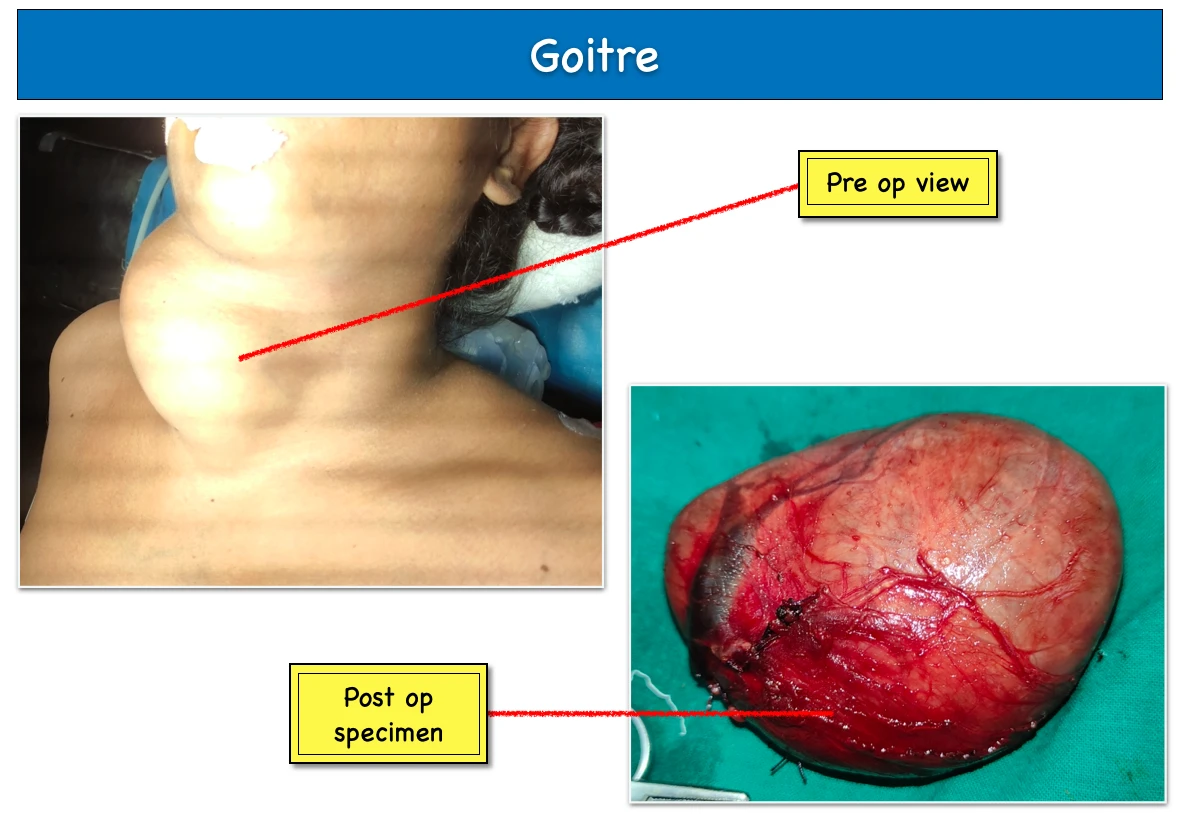
The butterfly-shaped thyroid gland is located at the base of your neck. An enlarging thyroid gland is a goitre. A clear lump or swelling at the base of your neck may be a sign and might feel unpleasant or tender but are mostly painless.
1. Clinical features :
Other than a swelling at the base of the neck, most persons with goiters don’t exhibit any other symptoms or indicators. Clinical features are influenced by the goiter’s growth rate, thyroid function, and breathing obstruction.
- Difficulty breathing when exerted, Difficulty swallowing, Hoarseness, Cough, and Snoring.
- Loss of weight, Tachycardia, A rapid pulse increased, Heat sensitivity, Irritability, and Anxiety, Muscle tremors, Routine bowel motions alterations to menstrual cycles, Difficulties in sleeping, Elevated blood pressure, Higher appetite
2. Aetiology-Causes :
Main principle is Over stimulation of thyroid gland by TSH. Now this can occur by two different mechanism.
- Improper secretion from an anterior pituitary Microadenoma.
- In response to a persistently low level of thyroid hormone in the blood.
Various causes can be :
- Inflammation
- Grave’s disease
- Hashimoto’s disease
3. Types :

- Simple goitre : This occurs in euthyroid condition that is due to the normal range of T3 and T4 level. This can be Diffuse parenchymatous, Colloid, Multi nodular, Solitary.
- Toxic Goitre : This is mainly of three types and they are Diffuse(Grave’s disease), Multinodular and toxic adenoma.
4. Investigations :
- Ultrasound is gold standard
- FNAC
- USG guided Biopsy
- CT Scan
5. Treatment :
- Iodised salt
- Tablet Thyroxine in a dose of 0.15-0.2 mg daily for few months
- Surgery : Total thyroidectomy, Subtotal thyroidectomy, Total lobectomy, Total thyroidectomy.